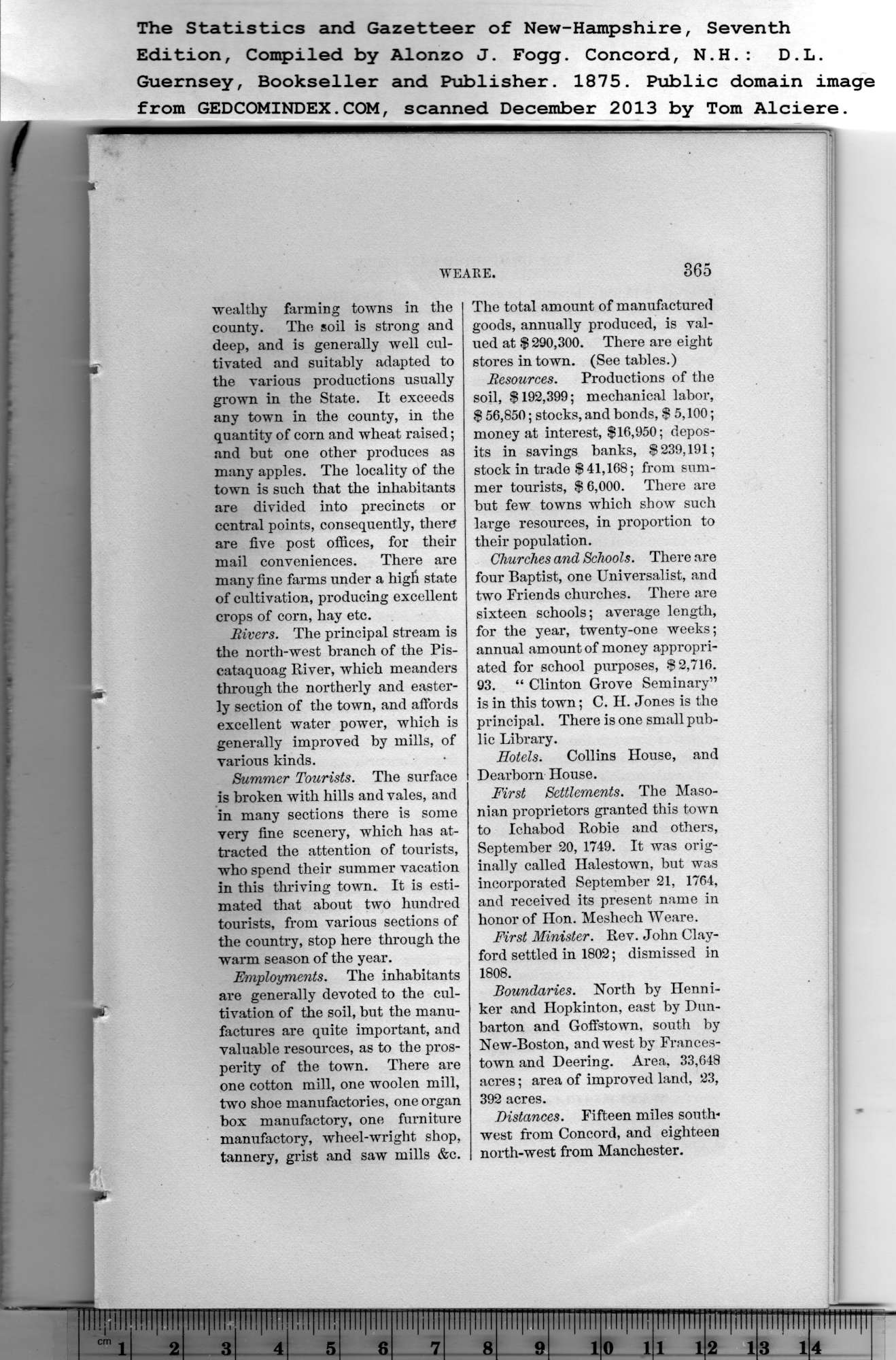|
wealthy farming towns in the
county. The soil is strong and
deep, and is generally well cul-
tivated and suitably adapted to
the various productions usually
grown in the State. It exceeds
any town in the county, in the
quantity of corn and wheat raised;
and but one other produces as
many apples. The locality of the
town is such that the inhabitants
are divided into precincts or
central points, consequently, there
are five post offices, for their
mail conveniences. There are
many fine farms under a high state
of cultivation, producing excellent
crops of corn, hay etc.
Rivers. The principal stream is
the north-west branch of the Pis-
cataquoag River, which meanders
through the northerly and easter-
ly section of the town, and affords
excellent water power, which is
generally improved by mills, of
various kinds.
Summer Tourists. The surface
is broken with hills and vales, and
in many sections there is some
very fine scenery, which has at-
tracted the attention of tourists,
who spend their summer vacation
in this thriving town. It is esti-
mated that about two hundred
tourists, from various sections of
the country, stop here through the
warm season of the year.
Employments. The inhabitants
are generally devoted to the cul-
tivation of the soil, but the manu-
factures are quite important, and
valuable resources, as to the pros-
perity of the town. There are
one cotton mill, one woolen mill,
two shoe manufactories, one organ
box manufactory, one furniture
manufactory, wheel-wright shop,
tannery, grist and saw mills &c. |
The total amount of manufactured
goods, annually produced, is val-
ued at $ 290,300. There are eight
stores in town. (See tables.)
Resources. Productions of the
soil, $192,399; mechanical labor,
$ 56,850; stocks, and bonds, $ 5,100;
money at interest, $16,950; depos-
its in savings banks, $ 239,191;
stock in trade $41,168; from sum-
mer tourists, $ 6,000. There are
but few towns which show such
large resources, in proportion to
their population.
Churches and Schools. There are
four Baptist, one Universalist, and
two Friends churches. There are
sixteen schools; average length,
for the year, twenty-one weeks;
annual amount of money appropri-
ated for school purposes, $2,716.
93. “ Clinton Grove Seminary”
is in this town; C. H. Jones is the
principal. There is one small pub-
lic Library.
Hotels. Collins House, and
Dearborn House.
First Settlements. The Maso-
nian proprietors granted this town
to Ichabod Robie and others,
September 20, 1749. It was orig-
inally called Halestown, but was
incorporated September 21, 1764,
and received its present name in
honor of Hon. Meshech Weare.
First Minister. Rev. John Clay-
ford settled in 1802; dismissed in
1808.
Boundaries. North by Henni-
ker and Hopkinton, east by Dun-
barton and Goffstown, south by
New-Boston, and west by Frances-
town and Deering. Area, 33,648
acres; area of improved land, 23,
392 acres.
Distances. Fifteen miles south-
west from Concord, and eighteen
north-west from Manchester. |
